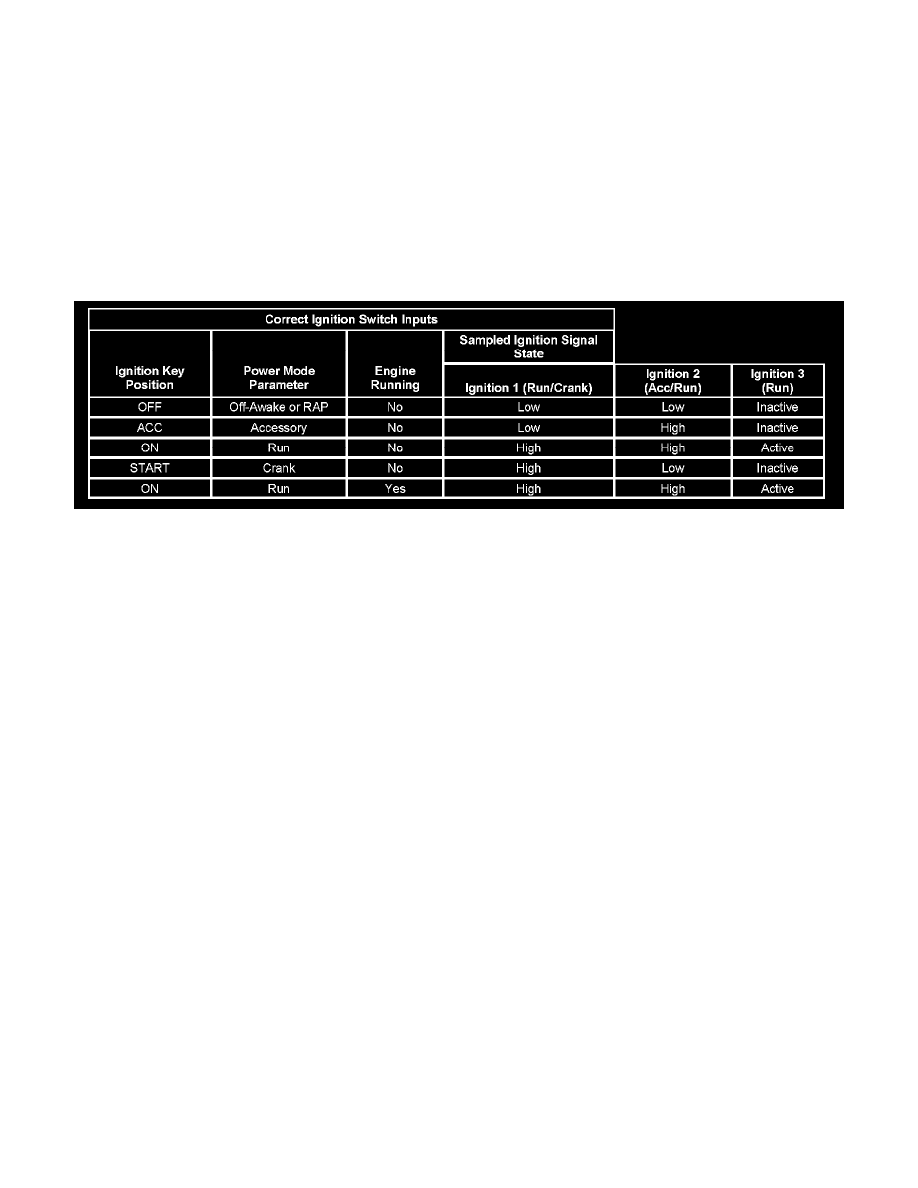Torrent AWD V6-3.4L VIN F (2006)

Body Control Module: Description and Operation
Power Mode
POWER MODE DESCRIPTION AND OPERATION
SERIAL DATA POWER MODE
On vehicles that have several control modules connected by serial data circuits, one module is the power mode master (PMM). On this vehicle the
PMM is the body control module (BCM). The BCM monitors Ignition 1 (Run/Crank), Ignition 2 (Acc/Run), and Ignition 3 (Run) signals from the
ignition switch, and the engine run flag (ERF) message from the engine control module (ECM) in order to determine the present power mode.
To determine the correct power mode the BCM uses:
-
The state of these signals
-
The sequence of switch closures received by the BCM
-
The status of the engine run flag
Correct Ignition Switch Inputs
The chart indicates the power modes detected and transmitted by the BCM.
The power mode message is a periodic with event message type and is transmitted by the PMM at every 2 seconds on class 2 link and at every 250 ms
on high speed GMLAN link. The power modes are identical transmitted on both class 2 and high speed GMLAN serial data circuits with the exception
of retained accessory power (RAP). RAP is transmitted only on class 2 and it is mapped on high speed GMLAN as Off Awake.
FAIL-SAFE OPERATION
Since the operation of the vehicle systems depends on the power mode, there is a fail-safe plan in place should the body control module (BCM) fail to
send a power mode message. The fail-safe plan covers modules with discrete ignition signal inputs as well as those modules using exclusively serial
data control of power mode.
SERIAL DATA MESSAGE
The modules that depend exclusively on serial data messages for power modes stay in the state dictated by the last valid BCM message until they
receive the engine status from the powertrain control module (PCM). If the BCM fails, the modules monitor the serial data circuit for the engine run
flag serial data. If the engine run flag serial data is true, indicating that the engine is running, the modules fail-safe to Run. In this state the modules
and their subsystems can support all operator requirements. If the engine run flag serial data is false, indicating that the engine is not running, the
modules fail-safe to OFF-AWAKE. In this state the modules are constantly checking for a change status message on the serial data circuits and can
respond to both local inputs and serial data inputs from other modules on the vehicle.
DISCRETE IGNITION SIGNALS
Those modules that have discrete ignition signal inputs also remain in the state dictated by the last valid BCM message received on the serial data
circuits. They then check the state of their discrete ignition input to determine the current valid state. If the discrete ignition input is active, B+, the
modules will fail-safe to the RUN power mode. If the discrete ignition input is not active, open or 0 voltage, the modules will fail-safe to
OFF-AWAKE. In this state the modules are constantly checking for a change status message on the serial data circuits and can respond to both local
inputs and serial data inputs from other modules on the vehicle.
